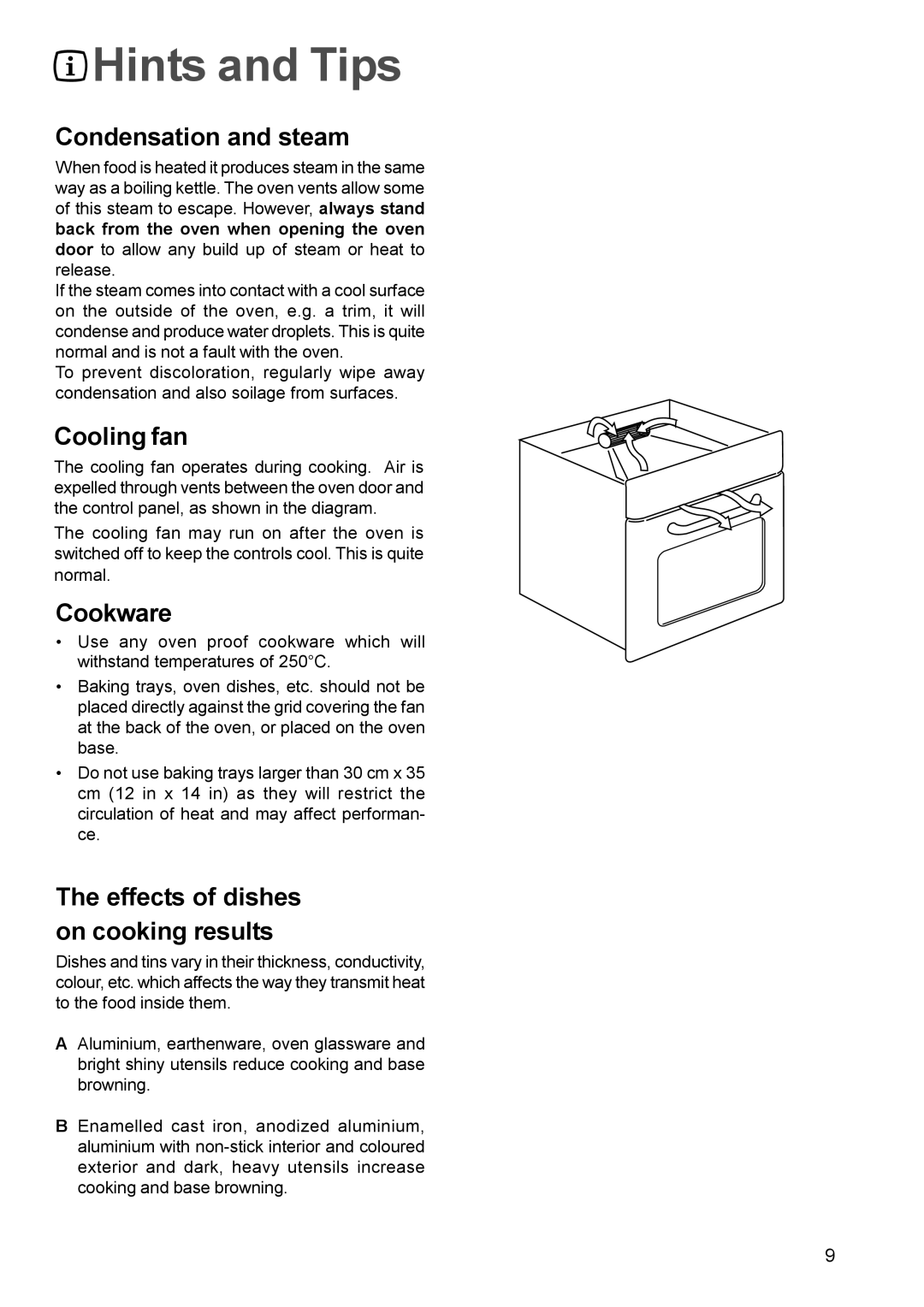EOB 966 specifications
The Electrolux EOB 966 is a sophisticated and technologically advanced oven designed to meet the needs of modern kitchens. This oven is part of Electrolux's renowned collection, combining style, functionality, and energy efficiency. With its sleek design, it seamlessly integrates into various kitchen aesthetics, while also ensuring top-tier cooking performance.One of the primary features of the EOB 966 is its multifunctional cooking capabilities. It boasts several cooking modes, including conventional baking, fan-assisted cooking, and grilling, allowing users to explore a variety of culinary techniques. The innovative TasteControl feature ensures that food is consistently cooked to perfection by monitoring and adjusting the temperature throughout the cooking process.
The EOB 966 is equipped with an advanced Pyrolytic cleaning function. This self-cleaning technology heats the oven to an astounding temperature, effectively incinerating food residues and spills, simplifying maintenance and ensuring that the oven stays in pristine condition with minimal effort from the user.
Energy efficiency is a significant consideration with the EOB 966. With an A+ energy rating, it not only reduces energy consumption but also helps save on electricity bills. This efficiency is paired with the oven's advanced insulation, which maintains heat more effectively and allows for faster cooking times.
Another standout feature is its intuitive touchscreen interface. The modern control panel allows for easy access to cooking settings, timers, and temperature adjustments with just a few taps. Additionally, the Smart Food Probe gives the user precise monitoring of internal food temperatures, ensuring meats are cooked perfectly every time.
The EOB 966 also includes a spacious cavity capacity, accommodating larger dishes, which makes it ideal for families and entertaining. The oven's stylish exterior is complemented by a clean, contemporary finish, while interior lighting provides excellent visibility to monitor cooking progress.
In summary, the Electrolux EOB 966 is more than just a cooking appliance; it is a versatile kitchen companion designed for those who appreciate quality and efficiency in their culinary endeavors. With its array of features, contemporary design, and user-friendly technology, it stands out as an exemplary choice for modern home chefs.

